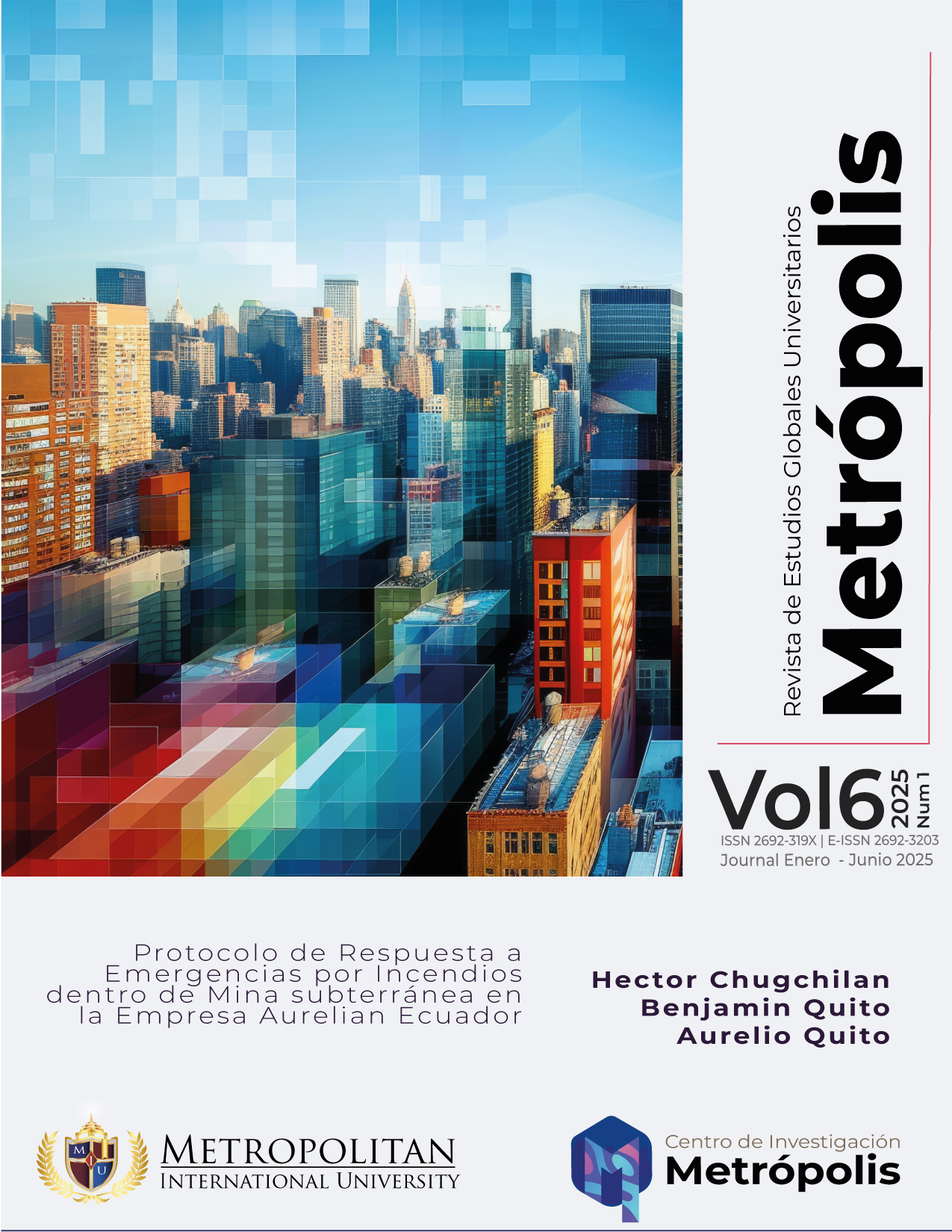Active Fire Emergency Response Protocol for Underground Mine at Aurelian Ecuador Company
Keywords:
Fires, Protocol, Mines, Safety, TrainingAbstract
This research article addresses the importance of establishing an emergency response protocol for fires in underground mines. It identifies the main risk factors, such as the presence of combustible materials, flammable gases, poorly maintained electrical equipment, and inadequate ventilation. The article also highlights the spread of fire in confined spaces, where extreme heat, gas accumulation, and the lack of proper evacuation routes worsen the situation and complicate emergency responses. Furthermore, it explores the regulations and protocols applicable in Ecuador, emphasizing the need to comply with mining safety and occupational health regulations, as well as international standards to ensure better protection for workers. The importance of optimizing technology use, such as early detection sensors and real-time monitoring systems, is also emphasized to improve emergency response. The article proposes updating evacuation protocols, adapting them to the specific conditions of each underground mine, and ensuring the existence of adequate shelters for the survival of workers. Regarding training, it is noted that continuous training programs for workers and emergency brigades should be improved, using tools such simulators and virtual reality for more effective and realistic training. The study concludes that an integrated approach combining risk identification, regulatory compliance, the use of advanced technology, and staff training is essential to ensure the safety and protection of workers in underground mines. Adopting this approach can significantly reduce the risks associated with mining fires and enhance the overall emergency response efforts, ensuring a safer working environment for all mining personnel involved in these hazardous and life-threatening activities.

Downloads
Published
How to Cite
Issue
Section
License

This work is licensed under a Creative Commons Attribution-NonCommercial-ShareAlike 4.0 International License.



